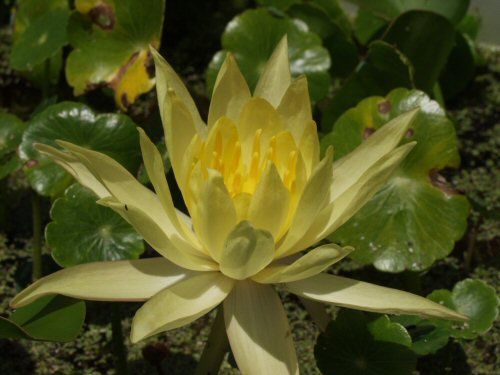FNPS Plant Database
Nymphaea mexicana
Nomenclature
Common Name:
Synonym(s):
Genus species:
Family:
Nymphaeaceae
Plant Specifics
Form:
Size:
Life Span:
Long-lived perennial
Flower Color:
Fruit Color:
Phenology:
Noted For:
Landscaping
Recommended Uses:
Considerations:
Availability:
Propagation:
Light:
Moisture Tolerance:
Always Flooded---------------------------------Extremely Dry
■■■■■■□□□□□□□□□□□□□□□□□□□□□□□□□□□□□□□□□□□□
1 -to- Aquatic
Salt Water Flooding Tolerance:
Unknown
Salt Spray/Salty Soil Tolerance:
Low/no tolerance of salty wind or direct salt spray
Soil or Other Substrate:
Sand, Clay, Loam
Soil pH:
Suitable to Grow In:

USDA zones are based on the average annual extreme minimum winter temperature.
Don't know your zone? Click here to search by zip code.
Ecology
Wildlife:
Everything from flies, to beetles, and various sorts of bees have been recorded on water lilies (In Defense of Plants blog). Given the yellow color, this plant may attract primarily bees and flies.
Native Habitats:
Natural Range in Florida:
Visit the USF Libraries Atlas of Florida Plants
Comments:
Ethnobotany:
General Comments:
The range of this plant appears to encompass most of Florida with actual occurrances having been found in streams with appropriate water chemistry (appears to like relatively neutral pH and high nutrients). Has been planted in areas where it is not known to occur naturally including old mine ponds and reclaimation areas.
This plant is not a nuisance in Florida. It is, however, listed as a nuisance invasive in Australia.
Citations:
https://www.inaturalist.org/taxa/78236-Nymphaea-mexicana







